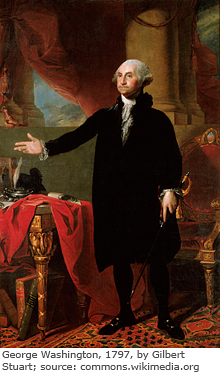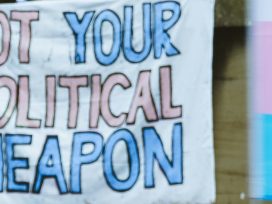Barack Obama’s updated version of the so-called war on terror has received a free pass from most US political and legal scholars. To be sure, civil libertarians and liberal voices on the editorial pages of the New York Times have pilloried Obama for his failure to fulfil what appeared to be heartfelt 2008 campaign promises to reverse his conservative predecessor’s controversial counterterrorism policies. Yet nothing akin to the avalanche of critical books or journal articles burying President George W. Bush’s policies has emerged. In part, the difference stems from Obama’s admirable decision to abandon the Bush administration’s embrace of so-called “enhanced interrogation” (i.e., torture). The silence likely stems as well from the partisan preferences of law professors and political scientists, many of whom instinctively sympathize with Obama and his Democratic administration. Those defensive instincts have surely been reinforced, albeit inadvertently, by right-wing critics like former Vice-President Dick Cheney and ex-New York Mayor Rudy Giuliani, neither of whom seems willing to miss an opportunity in front of the TV cameras to denounce Obama for being “weak on terrorism.”

Yet Obama’s mediocre humanitarian record in the “war on terror” deserves our critical scrutiny. His disappointing legacy generates an obvious question: what happened? Here I argue that Obama’s shortcomings can be attributed substantially to the specifically presidential character of US liberal democracy, according to which the chief executive is expected to perform institutional and symbolic functions reminiscent of classical monarchy. US presidential government’s latent monarchist attributes have played a decisive role in generating far-reaching policy and legal continuities between Bush and Obama. Unless US Americans take a more critical look not only at President Obama’s disappointing record in the war on terror, but also at the institutional idiosyncrasies of US presidential government, dramatic humanitarian improvements in the ongoing – and seemingly endless – US war on terror are unlikely to occur.
Haunted by George W. Bush’s ghost
In fairness, Obama has broken decisively with his Republican precursor’s positions in some crucial arenas. Most dramatically, Obama has disavowed the Bush administration’s early endorsement of torture, and despite sizeable political opposition also released many previously classified documents about recent US interrogation practices, some of which provide absolutely harrowing details. Obama also cut loose from Bush by closing down so-called offshore “black sites” where suspected terrorists were subjected to controversial forms of interrogation, while forthrightly reaffirming the US commitment to the relevant Geneva conventions concerning the humane treatment of prisoners. He also has moved away from making constitutionally tendentious broad claims about so-called “inherent executive power,” instead typically appealing to statutory legislation (e.g., Congress’s September 18, 2001 authorization “to use all necessary and appropriate forces” against those aiding or abetting the 9/11 attacks) as a basis for his actions. As part of a noteworthy shift in the rhetorical (and also sometimes: legal) framework under which counterterrorism is now waged, the bellicose language of “war on terror” has pretty much vanished from administration statements. The bogus Bush-era legal category of “enemy combatant” is no longer deployed, and even when pursuing actions reminiscent of his predecessor’s, the Obama administration highlights their alleged compatibility with basic rule of law virtues (e.g., the right to a fair hearing).
Yet as critics on both the left and right have accurately noted, “Obama [has] continued almost all of his predecessor’s counterterrorism policies.” In this vein, Obama has annually renewed President Bush’s original executive declaration of a “national emergency” from September 14, 2001, and he has frequently taken over – or at most modestly altered – some core Bush-era legal doctrines. Although its public rhetoric might suggest otherwise, the administration continues to insist that the US remains at war with Al-Qaeda, and it still asserts far-reaching executive authority to combat terrorism by appealing to the vast and unwieldy legislative delegations of authority promulgated right after the 9/11 attacks. Like his conservative forerunner, Obama relies on the controversial Patriot Act – whose renewal he supported – to legitimize some of his policies. Nor has the Obama administration bothered to explain when if ever the ongoing “state of emergency” will conclude. Not surprisingly, the administration has continued many and perhaps most of the extensive forms of intelligence gathering and surveillance employed by Bush.
Obama’s initial promise to close it down notwithstanding, Guantanamo Bay (Gitmo) remains open and operative, albeit on a smaller scale (i.e., with only about 165 detainees) than under Bush. Even if blame for this failure can by no means be placed solely at Obama’s feet, he has followed Bush in endorsing indefinite detention for some suspected terrorists, many of whom will apparently remain in permanent limbo at Gitmo. Similarly, Obama’s government has reformed but not abandoned the controversial special emergency “military commissions” (i.e., military courts) established by the Bush administration. While the commissions now look quite different from the toothless kangaroo courts initially sought by former Secretary of Defense Rumsfeld, in part because of some procedural improvements favouring detainees, the overall picture remains sobering: the administration is still fighting off legal challenges to its attempt to give base commanders carte blanche authority over visits by legal counsel, including vast discretion to decide how defense lawyers can use classified information they may glean from detainees they represent.
Again reminiscent of its forerunner, the Obama administration continues to practice “rendition” by shipping some suspected terrorists to other countries. Even though most evidence suggests that it has done so more humanely, the legal test it employs for determining where to send accused terrorists remains unchanged: only if there is more than a 50 per cent chance of detainees facing torture are officials prohibited from sending them there. Similarly, even though Obama’s government has improved screening and procedural protections for detainees, the administration also argues that basic habeas corpus protections do not cover those captured overseas (e.g., in Afghanistan). It seems as well to have appropriated the Bush administration’s hard line views on state secrecy and appeals to them when fighting, no less aggressively, against lawsuits challenging its policies. Like Bush, Obama insists on his right to engage in what lawyers describe as “forum shopping”: only when legally and politically convenient will suspected foreign-born terrorists perhaps get their day in a normal or ordinary court. Moreover, as the New York Times editors accurately commented on September 5, 2012, “any remaining hope for imposing meaningful accountability for torture and other abuses” committed under the Bush administration has “for all practical purposes” now ended. Even those CIA interrogators who effectively tortured prisoners to death, going well beyond even those suspect interrogation practices condoned by President Bush, will not be facing prosecution.
Last but by no means least, the Obama administration has surpassed anything President Bush attempted in one area: he has dramatically ramped up the targeted killing of suspected terrorists abroad, even claiming legal authority to kill – and then proceeding to do so – a US citizen, Anwar al-Awlaki, and then turning to Bush-era legal doctrines to beat back a courtroom challenge. As Newsweek journalist Daniel Klaidman shows in his aptly entitled Kill or Capture: The War on Terror and the Soul of the Obama Presidency, an insightful account of the administration’s internal battles over counterterrorism, targeted killings, preferably by means of drones, quickly became a favoured policy tool for a mix of interlocking political and legal imperatives. They allow the administration to minimize US military casualties, while typically garnering strong public support and permitting Obama to accentuate his image as a “tough” leader. Just as conveniently, they do not require capturing and detaining dangerous terrorists, which has become a political and legal morass, given congressional hostility to trying foreign terrorists in ordinary courts as well as the administration’s own commitment to downsize Gitmo and other offshore detention centres. In any event, the changes have been dramatic: in Pakistan between 2004 and 2007, there were nine drone attacks authorized by the Bush administration, whereas in 2010 alone Obama approved 111. Despite widespread foreign condemnation, the administration continues to make targeted killing its weapon of choice, arguing that it is legally justified by the state of war which exists vis-à-vis Al-Qaeda and its allies. Yet the attacks remain controversial for one straightforward reason: President Obama has taken it upon himself to serve as judge, jury, and executioner even in cases involving US citizens.
Critics may be exaggerating when they dub Obama’s war on terror “Bush Lite.” Nonetheless, Obama has in fact mostly followed in his predecessor’s footsteps, and in at least one arena (i.e., targeted killings) he has radicalized employment of one suspect controversial Bush-era antiterrorism tool.
Barak Obama as Enigma
Such continuities leave us with a tricky puzzle. In 2008 Obama campaigned aggressively against the Bush administration’s counterterrorism program. Of course, presidents often fail to fulfil promises made on the campaign trail. Yet Obama’s commitment to a fundamental overhaul represented more than opportunistic political rhetoric. A longstanding and eloquent defender of basic civil liberties and the rule of law, former editor of the Harvard Law Review, protégé of prominent liberal jurists, and former law professor at the University of Chicago, Obama seemed genuinely committed to dramatic change. Based on his own legislative and political record, and last but not least the fact that popular anxiety about terrorism no longer dominated the political landscape, having been supplanted by worry about the global economic crisis, many observers sensibly expected that we would see major changes in counterterrorism. Yet we have not.
Adding to the puzzle’s complexity is evidence corroborating Obama’s deeply rooted legalist instincts: Klaidman’s Kill or Capture describes numerous episodes in the last four years when the President initially joined forces with the so-called “idealistic” defenders of the rule of law in his government (in particular, Attorney General Eric Holder) in opposition to Realpolitiker (e.g., Rahm Emmanuel). At least occasionally – for example, when releasing secret documents about US interrogation practices – he arguably did so at considerable political risk.
So why Obama’s failure to transform US counterterrorism? In the contemporary debate, four competing explanations have been suggested. Although each can marshal some important evidence on its behalf, each ultimately fails to make sense of key features of the story.
The first and seemingly most obvious answer has gained a following among Obama’s disappointed liberal supporters as well as journalists like Klaidman. It zeroes in on Obama’s relative political inexperience: his administration has simply messed things up, with an indecisive chief executive depicted as ineptly overseeing top-level officials and advisors deeply divided over how and when to overturn Bush-era counterterrorism policies. Obama has failed decisively to set the agenda, either vis-à-vis his own cabinet, or in relation to the public at large. As law professor David Cole has pointed out, President Obama quickly gave up even trying to employ the presidential bully pulpit, here as in other policy arenas too often letting demagogical critics define the terms of the debate. Revealingly, when opportunistically attacked at the 2012 Republican convention by Clint Eastwood for not having successfully closed down Gitmo, Obama’s campaign did not even bothering responding: unlike its 2008 first-run, his 2012 campaign steered clear from any discussion of the war of terror’s ugly legal underbelly.
Not surprisingly perhaps, Obama has regularly deferred to the “old hands” in the national security state: his point man on counterterrorism, John Brennan, has spent over twenty-five years in intelligence and served as George Tenet’s Chief of Staff while the Bush administration pursued its controversial interrogation program. When push has come to shove, Obama has followed the advice of those deeply enmeshed in the national security state while ignoring dissenting voices from the human rights community.
Even if this first explanation surely carries some weight, it suffers from one glaring weakness: when Obama during 2009 did arguably try to lead the way in pursuing an alternative policy course, in part by means of a series of forceful public pronouncements about the need to fundamentally overhaul counterterrorism, his efforts ignited destructive political fires within Congress and in civil society as well. His early efforts to close down Gitmo and try Al-Qaeda leaders like Khalid Sheik Mohammed in federal court were aggressively rebuffed in 2009 by Congress, which quickly and overwhelmingly moved to prohibit him from transferring detainees to prisons on the mainland USA. Revealingly, with Obama’s imprimatur, Attorney General Holder released classified materials about Bush-era torture, in part apparently hoping for a public outcry which might open the door to a congressional investigation and perhaps criminal prosecution of US officials. Holder in fact got his outcry. But it took a different tone than he expected: the conservative right – whipped into a predictable frenzy by Rupert Murdoch’s Fox News – provided the Attorney General with his first of many political shellackings. Obama and Holder soon found themselves running for political cover, mercilessly abandoned even by prominent members of the president’s own party.
So it is probably wishful thinking to believe that if Obama had been a more experienced leader he might have rolled back more Bush-era policies. Even if strategic errors were undeniably made, this explanation underplays the key role of what now appears to be deeply rooted opposition, within both Congress and civil society, to real change in US counterterrorism.
A second proposed explanation subscribes to what we might describe as an “institutional realist” perspective. In this view, governing is different from campaigning. Now sitting in the Oval Office, and forced to read daily briefings about ongoing terrorist plots against US citizens, Obama’s world inevitably looks different than it did from the US Senate or on the campaign trail in Iowa or Oregon. The “grim reality of presidential responsibility” transformed Obama. Obama inherited a vast array of institutions, practices, and formal as well as informal norms, many of which proved relatively impermeable to dramatic alteration for reasons known to anyone familiar with the workings of complex bureaucracies. Guantanamo Bay was only the most malodorous mess dropped at Obama’s front door at his new home in Washington D.C. The choreography of closing down Gitmo soon proved vastly more complex than Obama probably anticipated, in part because of its estimated 44 hardcore detainees, many of whose rights had been violated by so-called “enhanced interrogation,” leaving Obama with the unenviable task of closing down Gitmo without releasing genuine security threats who could no longer be successfully prosecuted in ordinary courts because of tainted and probably inadmissible evidence. From Obama’s perspective, the choice must have appeared tragic: he could let Al-Qaeda sympathizers – and perhaps some of its leaders – go free and thereby uphold the rule of law, but only at the cost of a potential security disaster and massive political backlash. The lack of cooperation from foreign countries – recall, for example, Angela Merkel’s shameful kowtowing to China, culminating in her refusal to provide refuge for a handful of harmless Uighers unjustly detained at Gitmo – hardly made things easier for Obama. Even if European leaders had previously been ready to criticize Gitmo when it suited their political needs, they preferred leaving the mess for Obama to clean up.
Even if this second narrative also provides part of the solution to the enigma, it misses something fundamental. It fails to account for the surprisingly across-the-board contours of the continuities between Bush and Obama. While one can easily grasp why the mess at Gitmo proved so burdensome, it remains more difficult to understand why internal institutional imperatives necessarily forced Obama to continue his predecessor’s surveillance policies, or why they preclude prosecution of egregious human rights violations by US officials. Nor can it explain Obama’s apparent enthusiasm for targeted drone killings. With every new resident in the White House there is always an unavoidable element of bureaucratic continuity. But why so much precisely where we might have expected far-reaching reform?
A third proposed explanation offers an easy answer to the last question: partisan politics. As anyone familiar with the increasingly polarized US political scene can readily attest, Republicans have been hell bent on discrediting Obama by depicting him as “weak on terrorism.” The fact that presidential polls in 2012 suggested that voters had come to trust Obama more on security matters than the Republicans – who apparently believe that they possess a natural monopoly when it comes to exploiting anxieties about terrorism – has clearly frustrated and indeed outraged Obama’s political rivals. So one reason he has generally stuck to Bush’s script is because he and his advisors have been forced to ward off a nasty and arguably unprecedented partisan political backlash, hardly unrelated to the fact that Obama represents a another nail in the coffin of white racial supremacy in a country where black political rights were only secured with the Voting Rights Act of 1965.
This third proposed answer downplays the unsettling fact that Obama’s early attempts to overhaul counterterrorism law and policy met with well-nigh universal condemnation. Legislation barring him from effectively closing Gitmo by prohibiting Obama from transferring detainees to the US mainland was passed in 2009 when his own party had large majorities in both houses of Congress. The vote in the Senate was 90-6 against Obama, with only six Democrats supporting his efforts. The House vote in favour of the propagandistically entitled “Keep the Terrorists Out of America Act” drew similarly massive bipartisan support. Obama’s decision to follow a draconian path cannot solely or even chiefly be attributed to partisan hostility: there is simply too much evidence that harsh anti-terrorist policies now have bipartisan support among political elites and perhaps also within the US citizenry at large.
This takes us to the fourth – and most sophisticated – proposed answer to the question of why Obama has followed in Bush’s footsteps. This position has been sketched out by Jack Goldsmith, a conservative Harvard Law professor who served in the Bush administration before – to his credit – getting fed up with its most extreme measures and moving on.
Pace those angered by Obama’s extensive borrowings from Bush, Goldsmith sees them as basically praiseworthy. For those vexed about indefinite detention, Abu Ghraib, and Guantanamo Bay, Goldsmith offers Americans some reassuring words. Despite some blemishes, the US polity, blessed with a thriving civil society and firmly institutionalized checks and balances, has in fact performed reasonably well since 9/11: President Bush was eventually forced to reconsider dubious policies like torture. Because of our resilient and self-correcting constitutional system, fruitful pushback not only encouraged officials to abandon them, but along the way vital lessons were learned about how best to navigate what Goldsmith sees as a more-or-less permanent state of emergency in which the US supposedly finds itself.
Although Obama’s present-day policies are hardly flawless, he has not only built on the best the Bush administration had to offer, but has also sensibly tried to render its legacy more consonant with the rule of law. Even better, Goldsmith argues, Obama has been driven to do so because he faces pressures like those which forced President Bush to give ground: “Obama too felt the sting of checks and balances.” For Goldsmith, the good news is undeniable: institutionalized checks and balances worked successfully in ways which might readily have been embraced by James Madison and other eighteenth-century constitutional architects, even if they sometimes operated in a fashion which might have surprised the founding fathers. In this view, a traditional focus on battles between and among the President, Congress, and Supreme Court needs to be supplemented by an examination of “surprising lower-level forces, inside and outside government, that have been so consequential in shaping presidential action.” In any event, pace critics who depict the present-day presidency as effectively uncontrolled by institutional and constitutional means, it continues to confront imposing institutional and broader political constraints.
Despite some undeniable virtues, this explanation suffers from real weaknesses. Most obviously, it does a disservice to a broad swath of opinion still worried about US counterterrorism. Even if Goldsmith praises civil libertarians and others for pushing back against executive excesses, he is ultimately unwilling to consider the possibility that their concerns remain legitimate. The emerging consensus on counterterrorism he describes extends from one fringe of the moderate (political) right to the other fringe of the moderate right: it is unclear where the rest of us fit in. Most importantly, his account obfuscates unsettling realities. For example, Goldsmith describes a supposedly thriving culture of “accountability journalism,” to which he ascribes “hundreds of astounding journalistic success stories since 9/11 in disclosing deep governmental secrets.” Yet some of the alleged successes stories easily lend themselves to a less optimistic gloss. As Goldsmith himself notes, as early as October 2001 foreign journalists were reporting about secret offshore US prisons and controversial interrogation practices. Yet the story made little headway in the US media until 2004 or so, and it was not until September 2006 that the Bush administration acknowledged the existence of secret prisons and started clearing them out. A success story perhaps, but one in which President Bush was able to pursue harsh interrogation measures with little public scrutiny for a number of years, and in fact continued doing so undeterred for nearly five.
Goldsmith sometimes has a hard time showing exactly how diffuse political pressures from civil society get effectively funneled by conventional institutional devices (i.e., Congress and the Supreme Court). And when he explores the role of such institutional checks in restraining the executive, he overstates their victories. During much of the Bush presidency, Congress remained at most a junior partner in the war on terror, regularly bending over backwards to grant the executive vast discretion. Admittedly, Congress has pushed back more forcibly against President Obama. However, its main efforts have consisted of resisting his cautious efforts to place US policy on a more humanitarian footing by closing Gitmo for example, or placing accused terrorists under the auspices of the ordinary courts. Especially since the House of Representatives fell under Republican control in 2010, Congress has tried to advance even more punitive and repressive policies than those sought by Obama. The 2012 defense appropriations bill, for example, codifies indefinite military detention and for the first time in US history prohibits the president from trying to bring accused terrorists before ordinary courts. The claim that checks and balances have worked effectively to counter executive excesses in the war on terror only makes sense if you unfairly equate Obama’s modest and uneven attempts to rein in executive power with Bush’s embrace of torture and other extreme measures. Congress has checked Obama, but not in a manner which would have comforted Madison: it has attacked his modest attempts to dismantle some limited facets of the imperial presidency.
Analogously, Goldsmith interprets the key Supreme Court rulings in Rasul vs. Bush, Hamdi vs. Rumsfeld, Hamdan vs. Rumsfeld, and Boumediene vs. Bush as having regularly “had a constraining impact on the President, his senior national security advisors, and soldiers in the field.” Yet he ultimately acknowledges – but never really takes seriously – the position held by many of the activists and lawyers about whom he reports, namely that their struggles have produced limited and sometimes superficial alterations to a fundamentally inhumane system for handling detainees. In the blunt words of Michael Ratner at the Center for Constitutional Rights: “We lost on the preventive detention issue, more or less. We lost on the military commission issue, more or less.”
For that matter, how secure would the modest institutional learning process described by Goldsmith have proven, for example, if Mitt Romney had been elected president last November? Romney not only adamantly endorsed waterboarding as an acceptable interrogation technique during the Republican primaries, but he also apparently planned on rolling back Obama’s strict prohibition on torture during the first days of his new administration.
American Kingship?
None of the four proposed explanations captures two – at first glance conflicting – features of Obama’s war on terror. On the one hand, we find far-reaching continuity between Obama and Bush, with the former holding onto significant executive prerogative (for example, indefinite detention of suspected terrorists) inherited from the latter. On the other hand, when Obama has occasionally tried to relinquish some of that power (for example, by moving to place detainees before ordinary courts), Congress and civil society aggressively opposed him. Against Obama, they have demanded far-reaching executive power even when Obama himself has been manifestly unsettled by its possession. When Congress has recently pushed back forcefully against the executive, it has done so in order to ward off Obama’s own cautious attempts to downsize the imperial presidency and the novel powers it has accrued over the last decade.
Much of this seemingly incongruous mix of attributes can be explained by the presidential character of US democracy, whose basic institutional imperatives provide those who hold executive power with incentives to maximize presidential prerogative in relation to Congress and the courts. Presidentialism’s most basic feature is what the political sociologist Juan Linz aptly describes as dual democratic legitimacy: both the executive and legislative possess independent sources of popular legitimacy since each branch is separately elected. Of course, institutional rivalry characterizes political life everywhere. However, within presidential systems resting on a relatively strict separation of powers, such rivalry is ubiquitous since both the president and legislature can make plausible claims to democratic legitimacy. In the US, for example, defenders of the presidency will typically describe its occupant as best embodying the “unified” popular will, while Congress’ defenders will suggest that it instead best represents the diversity of interests and voices found within American society as a whole. Institutional conflict is most likely to occur when the executive and legislature are controlled by rival parties, but even at other junctures, institutional conflict is surprisingly commonplace.
Given dual democratic legitimacy, holders of executive power face deeply rooted institutional incentives to retain whatever power or authority has landed in their laps. Fundamentally, their political fate is separate from that of the legislature’s. They have to prove – on their own – that they deserve the trust placed in them by the electorate. Unlike prime ministers in parliamentary regimes, they also face strict term limits. As astute observers have noted, this provides political life in presidential regimes with a particular sense of urgency since the executive will only have a short span of time in which to advance his or her program. Presidentialism’s strict separation of powers means that the executive will soon likely face potentially hostile opponents who have gained a foothold in the legislature. In the US, for example, even presidents recently elected with large majorities immediately need to worry about looming midterm congressional elections. To be sure, even prime ministers in parliamentary systems will want to get things done. But incentives to do so in a high-speed fashion remain more deeply ingrained in presidential systems.
These familiar facts about presidentialism allow us to help make sense of Obama’s disappointing record. Without doubt, Obama has been personally as well as ideologically committed to reining in Bush-era executive prerogative. Yet he now occupies an institutional position which necessarily makes him averse to far-reaching attempts to limit his own room for effective political and administrative action, especially when the stakes are high, as is manifestly the case in counterterrorism. Understandably, he needs to worry that the electorate will punish him – and not the Congress or Supreme Court – for mistakes which might result in deadly terrorist attacks on US citizens. Given the institutional dynamics of a presidential system characterized by more-or-less permanent rivalry, it is hardly surprising that he has held onto so much of the prerogative power successfully claimed for the executive branch by his right-wing predecessor. As Obama’s own political advisors have been vocally telling him since 2009, it might indeed prove politically perilous if he were to go too far in abandoning the substantial discretionary powers he enjoys in the war on terror. Unfortunately, their “sound” political advice – which indeed may have helped Obama get reelected – simultaneously has had deeply troublesome humanitarian and legal consequences.
This explanation still fails to account for why Congress and civil society have been so eager to give the executive far-reaching power even when Obama has resisted such efforts. Why the universal preference for continuing to outfit the executive with far-reaching discretion?
Presidentialism also rests on what we might loosely describe as “quasi-divine right.” To make a long story short: substantial evidence suggests that the modern presidency has come to perform many functions of traditional monarchy. Most importantly perhaps, the executive’s main job is to serve as what premodern political thought described as “protector of the realm,” “first warrior,” or what in the US one still dubs “commander-in-chief.” Obviously, most people no longer believe in divine right. However, in many respects the presidency serves as a functional as well as symbolic equivalent for classical monarchy. Parliamentary government separates the role of partisan political leader and symbolic head of state; presidentialism conflates them. The commonplace tendency within both sophisticated political theory and popular consciousness to associate the presidency with what Alexander Hamilton famously described in The Federalist Papers as executive “energy” and “dispatch” reproduces key traits of traditional European thinking about kingship, according to which only the unitary monarch was seen as able to provide expeditious and coherent responses to dire physical threats. By no means coincidentally, modern presidents are outfitted in foreign and military affairs with vast powers sometimes rivaling those of their royal predecessors. Not surprisingly, contemporary proponents of an outsized presidential executive – most prominently, John Yoo, author of the Bush administration’s infamous torture memos – now openly celebrate the US presidency’s monarchical attributes.
It is important to see how quasi-divine right is directly related to dual democratic legitimacy. Aspiring presidents must regularly try to “strut high above the political plane operated by ordinary mortals” in order both to underscore the contrast with alleged parliamentary parochialism and justify their extraordinary political authority. How better to buttress a claim to constitutional and political preeminence than by cultivating what Linz aptly characterizes as a “very different aura and self image” than mere “ordinary politicians?” The strict separation of powers found in presidential democracy leads holders of executive power to stand above or at least beyond the realm of normal or ordinary politics, and try at least to display attributes reminiscent of their royal predecessors, whose claim to authority often rested on popular belief in their supermundane talent or “divine” magic. No wonder that political discourse in modern presidential regimes seems so preoccupied with presidential “charisma.”
Presidentialism’s latent monarchical attributes can help us understand why Congress and civil society have been so eager to strengthen the executive’s hand in the war on terror. In the classical view, only the unitary presidential executive possess the requisite capacity for what Hamilton described in Federalist 70 as the “decision, activity, secrecy, and dispatch” necessary to ward off physical threats. This view has long constituted part of the popular mythology of presidential government. No wonder that an anxious electorate and its representatives in Congress tend instinctively to broaden the scope of executive power in the face of terrorism. Of course, there are many familiar reasons why a well-operating executive and administrative apparatus necessarily plays a major role in guaranteeing physical security: societies without the basic fundaments of modern statehood typically do not perform well in defending their citizens. Nonetheless, presidentialism’s monarchist attributes – including the belief in a quasi-divine right upon which presidentialism both relies and simultaneously helps generate – get in the way of a sober debate about what in fact the modern presidency can or should do. Despite the preoccupation with presidential charisma, modern presidents do not in fact have supermundane or magical powers. Moreover, it is dangerous to envision them, if only implicitly, as possessing such powers. Presidentialism rests on atavistic leftovers of an insufficiently disenchanted political worldview: the charismatic and supermundane ideology on which presidentialism relies is basically out of sync with a principled modern commitment to civil liberties and legality.
President Obama’s failure to roll back the inhumane counterterrorism policies of his conservative predecessor is obviously disappointing. Yet as I have tried to argue, the problems at hand go deeper. If US Americans are serious about setting out on a new course against terrorism, they will need to ask some tough questions not only about President Obama, but also about the institutional fundaments of our presidential – and increasingly outdated – version of modern democracy.







